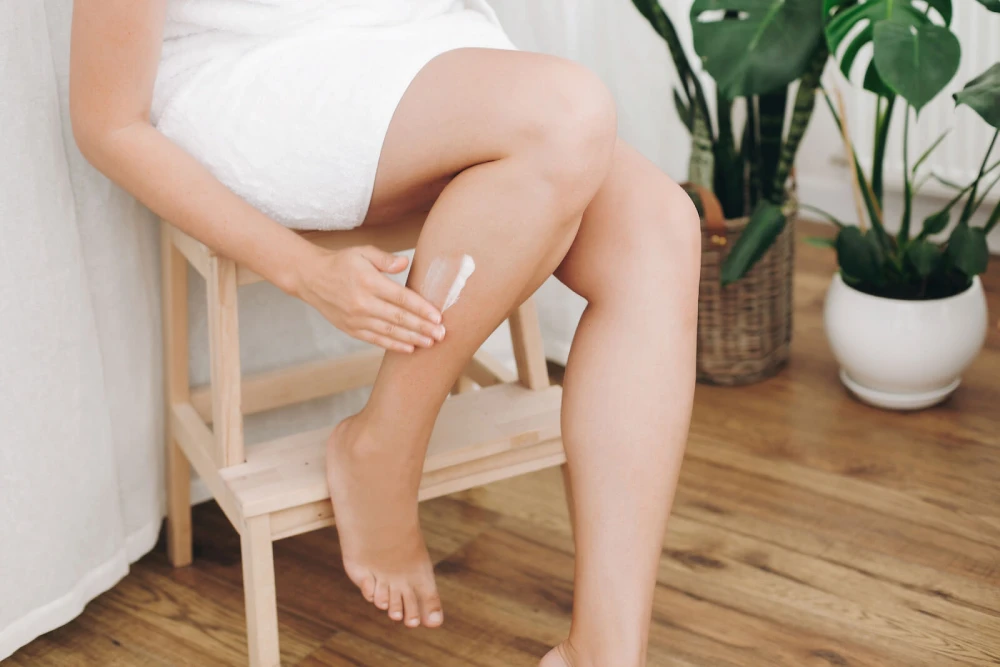Radio Frequency Ablation (RFA)
No More Veins …. Is a Promise
What is Radiofrequency Ablation (RFA) Treatment?
Radiofrequency (RF) endovenous ablation is a minimally invasive treatment procedure for venous reflux disease.
Using radiofrequency to heat and seal diseased great saphenous and perforator veins and address the underlying cause of severe varicose veins. The procedure uses radiofrequency energy to heat and cauterize damaged or weakened veins.
When your damaged vein is closed, your varicose veins fade away, and your blood is forced to move through healthier veins on its journey back to your heart and lungs.
Know what puts you at risk
How Radiofrequency Ablation (RFA) Works?
- The procedure is done in the clinic using local anesthesia at the site of the procedure
- The catheter is inserted into the diseased vein
- The catheter delivers radiofrequency waves energy into the vessel in 20-second intervals. This heats the walls of the vein in 7 cm increments and causes it to collapse.
- The ablated vein becomes scar tissue and eventually is later absorbed by the body.
- The same procedure is done on the other leg too if both legs would undergoing treatment.
- The procedure takes 20-30 minutes for one leg.
- The catheter is then removed and the catheter insertion site is covered with a medical bandage.

Instructions
Radiofrequency Ablation (RFA) Procedure

Things you have to do before procedure
- Drink plenty of water
- If sedative was prescribed (Xanax or Zolam), please take it 1 hour before procedure
- Do not apply creams or lotions to your leg before treatment
- Wear loose, comfortable clothing such as long pants, shorts, or skirt to accommodate bandage after treatment
- Let us know if you are taking oral contraceptive pills

Things you have to do After procedure
Activity
- Maintain your normal level of activity
- Walk at least 30 minutes daily to promote healing and limit risk of complications
- Avoid strenuous activities and heavy lifting for at least two weeks
- Do not sit or stand for long periods of time for the first week
- Avoid hot baths, or excessive sun exposure for the first week
Compression Stockings
- Keep the bandage under the stockings for 2 days
- Wear the compression stockings day and night for first two days after the procedure
- Continue to wear the stockings during the day only for the next 10 days
Dressing
- Keep the gauze and band-aids over the laser insertion site for 2 days
- After that you may shower. Remove the gauze dressing and wipe the entry site with antiseptic alcohol or betadine. Cover with band-aid until healed

Medication Prescription
A written prescription may be provided for pain medication to be taken as needed.

Schedule A Follow Up Visit
- Schedule your follow-up visit and Duplex (ultrasound) scan within 2 weeks after your procedure.
- Bruising and redness is normal. You may also feel a tugging sensation for the first week after the procedure. Sometimes people can feel a hard area like a pencil under the skin especially around the knee. This is normal and will go away in a few months. The discomfort goes away in a few weeks but should not inhibit your normal activities.
- Make sure you are taking your prescribed medications including pain killers
When To Call Your Doctor
- Pain not relieved by rest and/or pain medications
- Fever greater than 38 degrees celsius
- Difficulty breathing or feeling short of breath
- Uncontrolled bleeding from the insertion site
We Have The Answers
We know you have some questions and concerns
How long does the Radiofrequency (RF) Procedure take?
The RF procedure typically takes approximately 45-60 minutes
Does the RF Procedure require anesthesia?
The RF procedure is performed in iVein Clinic under local anesthesia without the need for hospitalization or anaesthesia
After the RF Procedure, how quickly can I return to normal activities?
After the procedure, you will be able to walk immediately. Many patients experience a quick return to normal activities, typically within a few days. For a few weeks following the treatment, we recommend a regular walking regimen and suggest you refrain from very strenuous activities (i.e., heavy lifting) or prolonged periods of standing.
How soon will my symptoms improve after the RF Procedure?
Most patients report a noticeable improvement in their symptoms within one to two weeks following the procedure.
Can I expect any pain, bruising or tenderness after the RF Procedure?
Although it is possible to experience pain, bruising or tenderness after treatment, many patients report minimal to no scarring, bruising or swelling following the RF procedure.
Is the RF Procedure covered by insurance?
Most insurance companies pay for the RF procedure in part or in full. iVein Clinic has coverage policies with major health insurers.
Is the Treatment by Radiofrequency Ablation similar to Endovenous Laser Ablation?
Both are minimally invasive techniques that can treat varicose veins. Both use heat to obliterate diseased veins. And both provide better results compared to surgery. However, there are some technical differences between the two procedures.
Laser catheters are generally more slim and more flexible than RF catheters which makes it technically slightly superior in small caliber veins as well as more tortuous veins. Also the end firing tip in laser rather than the 7 cm heat coil in radiofrequency, makes laser more suitable for short veins and perforators as well.
Although both laser and radiofrequency varicose vein ablation proved effective and are superior to traditional surgical methods, the laser is slightly better than radio waves due to some technical factors.


